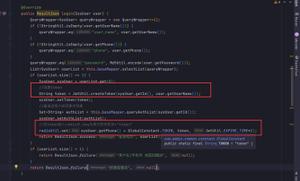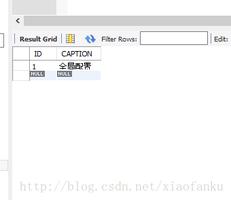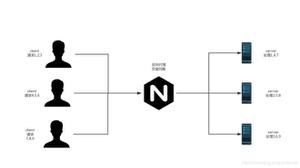Spring Boot Async异步执行任务过程详解
异步调用就是不用等待结果的返回就执行后面的逻辑,同步调用则需要等带结果再执行后面的逻辑。
通常我们使用异步操作都会去创建一个线程执行一段逻辑,然后把这个线程丢到线程池中去执行,代码如下:
ExecutorService executorService = Executors.newFixedThreadPool(10);
executorService.execute(() -> {
try {
// 业务逻辑
} catch (Exception e) {
e.printStackTrace();
} finally {
}
});
这样的方式看起来没那么优雅,尽管用了java的lambda。在Spring Boot" title="Spring Boot">Spring Boot中有一种更简单的方式来执行异步操作,只需要一个@Async注解即可。
@Async
public void saveLog() {
System.err.println(Thread.currentThread().getName());
}
我们可以直接在Controller中调用这个业务方法,它就是异步执行的,会在默认的线程池中去执行。需要注意的是一定要在外部的类中去调用这个方法,如果在本类调用是不起作用的,比如this.saveLog()。 最后在启动类上开启异步任务的执行,添加@EnableAsync即可。
另外关于执行异步任务的线程池我们也可以自定义,首先我们定义一个线程池的配置类,用来配置一些参数,具体代码如下:
import org.springframework.boot.context.properties.ConfigurationProperties;
import org.springframework.context.annotation.Configuration;
/**
* 异步任务线程池配置
*
* @author yinjihuan
*/
@Configuration
@ConfigurationProperties(prefix = "spring.task.pool")
public class TaskThreadPoolConfig {
//核心线程数
private int corePoolSize = 5;
//最大线程数
private int maxPoolSize = 50;
//线程池维护线程所允许的空闲时间
private int keepAliveSeconds = 60;
//队列长度
private int queueCapacity = 10000;
//线程名称前缀
private String threadNamePrefix = "FSH-AsyncTask-";
public String getThreadNamePrefix() {
return threadNamePrefix;
}
public void setThreadNamePrefix(String threadNamePrefix) {
this.threadNamePrefix = threadNamePrefix;
}
public int getCorePoolSize() {
return corePoolSize;
}
public void setCorePoolSize(int corePoolSize) {
this.corePoolSize = corePoolSize;
}
public int getMaxPoolSize() {
return maxPoolSize;
}
public void setMaxPoolSize(int maxPoolSize) {
this.maxPoolSize = maxPoolSize;
}
public int getKeepAliveSeconds() {
return keepAliveSeconds;
}
public void setKeepAliveSeconds(int keepAliveSeconds) {
this.keepAliveSeconds = keepAliveSeconds;
}
public int getQueueCapacity() {
return queueCapacity;
}
public void setQueueCapacity(int queueCapacity) {
this.queueCapacity = queueCapacity;
}
}
然后我们重新定义线程池的配置:
import java.lang.reflect.Method;
import java.util.concurrent.Executor;
import java.util.concurrent.ThreadPoolExecutor;
import org.slf4j.Logger;
import org.slf4j.LoggerFactory;
import org.springframework.aop.interceptor.AsyncUncaughtExceptionHandler;
import org.springframework.beans.factory.annotation.Autowired;
import org.springframework.context.annotation.Configuration;
import org.springframework.scheduling.annotation.AsyncConfigurer;
import org.springframework.scheduling.concurrent.ThreadPoolTaskExecutor;
@Configuration
public class AsyncTaskExecutePool implements AsyncConfigurer {
private Logger logger = LoggerFactory.getLogger(AsyncTaskExecutePool.class);
@Autowired
private TaskThreadPoolConfig config;
@Override
public Executor getAsyncExecutor() {
ThreadPoolTaskExecutor executor = new ThreadPoolTaskExecutor();
executor.setCorePoolSize(config.getCorePoolSize());
executor.setMaxPoolSize(config.getMaxPoolSize());
executor.setQueueCapacity(config.getQueueCapacity());
executor.setKeepAliveSeconds(config.getKeepAliveSeconds());
executor.setThreadNamePrefix(config.getThreadNamePrefix());
//线程池对拒绝任务(无线程可用)的处理策略,目前只支持AbortPolicy、CallerRunsPolicy
//AbortPolicy:直接抛出java.util.concurrent.RejectedExecutionException异常 -->
//CallerRunsPolicy:主线程直接执行该任务,执行完之后尝试添加下一个任务到线程池中,可以有效降低向线程池内添加任务的速度 -->
//DiscardOldestPolicy:抛弃旧的任务、暂不支持;会导致被丢弃的任务无法再次被执行 -->
//DiscardPolicy:抛弃当前任务、暂不支持;会导致被丢弃的任务无法再次被执行 -->
executor.setRejectedExecutionHandler(new ThreadPoolExecutor.CallerRunsPolicy());
executor.initialize();
return executor;
}
@Override
public AsyncUncaughtExceptionHandler getAsyncUncaughtExceptionHandler() {// 异步任务中异常处理
return new AsyncUncaughtExceptionHandler() {
@Override
public void handleUncaughtException(Throwable arg0, Method arg1, Object... arg2) {
logger.error("=========================="+arg0.getMessage()+"=======================", arg0);
logger.error("exception method:" + arg1.getName());
}
};
}
}
配置完之后我们的异步任务执行的线程池就是我们自定义的了,我们可以通过在属性文件里面配置线程池的大小等等信息,也可以使用默认的配置:
spring.task.pool.maxPoolSize=100
最后讲下线程池配置的拒绝策略,当我们的线程数量高于线程池的处理速度时,任务会被缓存到本地的队列中,队列也是有大小的,如果超过了这个大小,我们需要有拒绝的策略,不然就会内存溢出了,目前支持2种拒绝策略:
- AbortPolicy: 直接抛出java.util.concurrent.RejectedExecutionException异常
- CallerRunsPolicy: 主线程直接执行该任务,执行完之后尝试添加下一个任务到线程池中,可以有效降低向线程池内添加任务的速度
- 建议大家用CallerRunsPolicy策略,因为当队列中的任务满了之后,如果直接抛异常,那么这个任务就会被丢弃,如果是CallerRunsPolicy策略会用主线程去执行,就是同步执行,最起码这样任务不会丢弃。
以上是 Spring Boot Async异步执行任务过程详解 的全部内容, 来源链接: utcz.com/z/311812.html








